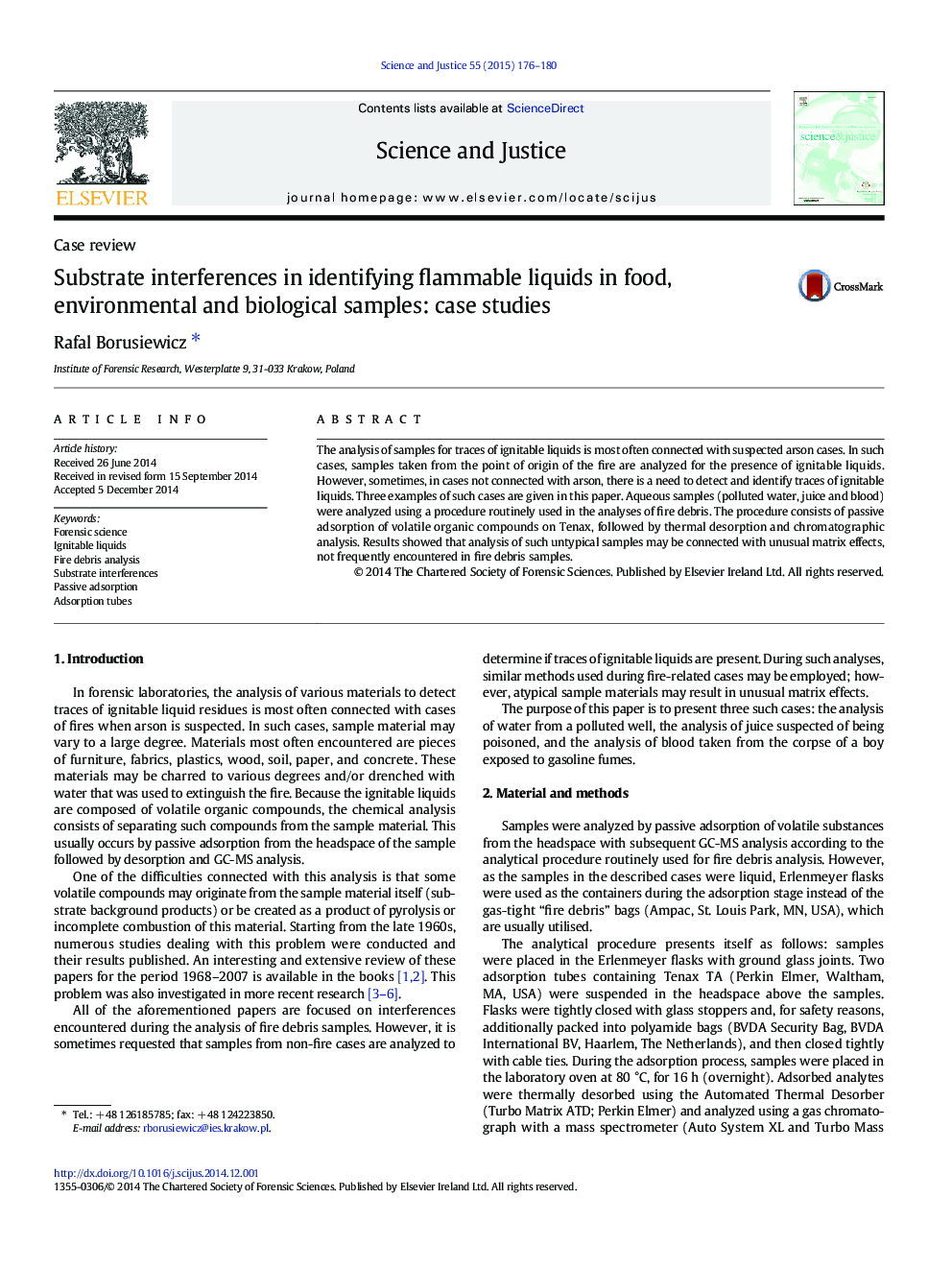| Article ID | Journal | Published Year | Pages | File Type |
|---|---|---|---|---|
| 106951 | Science & Justice | 2015 | 5 Pages |
•Aqueous samples were analyzed for the presence of ignitable liquid residues (ilr).•Components of ignitable liquids differ in solubility in water.•Relative ratios of compounds in ilr recovered from aqueous samples may be changed.•Changes in relative ratios may result in difficulties or even erroneous identification.•Interfering VOC’s may be created in some aqueous samples by microbes.
The analysis of samples for traces of ignitable liquids is most often connected with suspected arson cases. In such cases, samples taken from the point of origin of the fire are analyzed for the presence of ignitable liquids. However, sometimes, in cases not connected with arson, there is a need to detect and identify traces of ignitable liquids. Three examples of such cases are given in this paper. Aqueous samples (polluted water, juice and blood) were analyzed using a procedure routinely used in the analyses of fire debris. The procedure consists of passive adsorption of volatile organic compounds on Tenax, followed by thermal desorption and chromatographic analysis. Results showed that analysis of such untypical samples may be connected with unusual matrix effects, not frequently encountered in fire debris samples.
